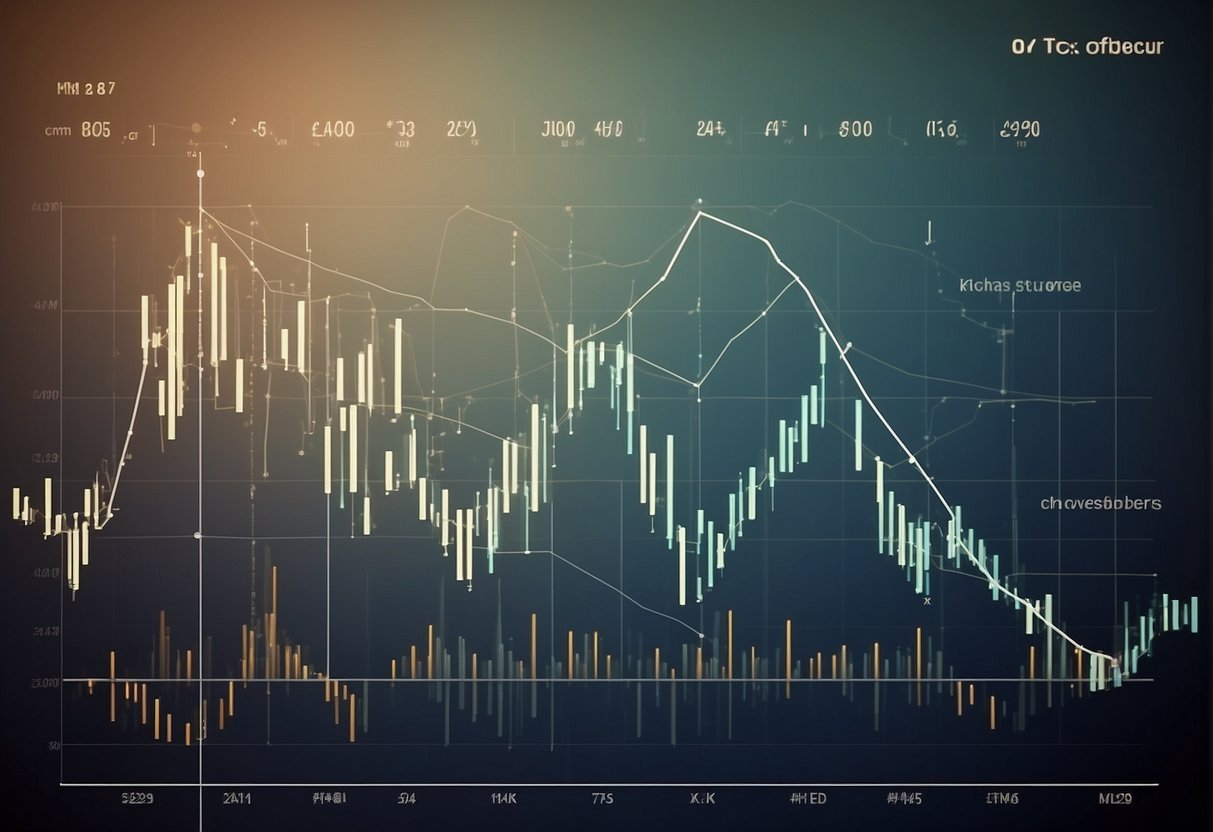Market timing is a widely debated investment strategy that attempts to predict future market movements to maximize returns. It contrasts with the buy-and-hold approach, where investors hold assets for an extended period, regardless of market fluctuations. Historically, different methods and analyses have been used to explore market timing, including technical analysis, fundamental analysis, and the study of behavioral aspects of market participants.

Technical analysis involves examining historical price and volume data to identify trends and patterns that could predict future market movements. This approach has roots in the early 1900s and has evolved to incorporate quantitative methods and statistical tools. On the other hand, fundamental analysis focuses on evaluating the intrinsic value of securities based on various economic indicators and financial ratios to make informed decisions about their potential performance.
Behavioral aspects of market timing consider how investor sentiment and emotions, such as fear and greed, can influence market trends and drive changes in asset prices. By understanding these factors, investors can make more informed decisions about timing their entry and exit points in the market.
Key Takeaways
- Market timing is an investment strategy that uses various analytical techniques to predict market movements.
- Technical and fundamental analysis are two common approaches used in market timing to identify trends and evaluate securities’ intrinsic value.
- Behavioral aspects of market timing assess how investor sentiment and emotions can influence market trends and asset prices.
Understanding Market Timing
Market timing refers to buying and selling assets, such as stocks and bonds, to profit from price fluctuations. Investors employ various strategies to identify and capitalize on changes in market conditions that can lead to price increases or decreases. Implementing market timing requires a deep understanding of the underlying dynamics of financial markets and the ability to use analytical tools to make informed investment decisions.
One critical aspect of market timing involves forecasting market trends using technical and fundamental analysis. Technical analysis examines historical price and volume data to identify patterns and trends, while fundamental analysis focuses on evaluating individual companies’ financial health and prospects. Both approaches can provide valuable insights into the future movements of asset prices, helping investors make better investment decisions.
However, it is essential to note that market timing is not without its risks. Predicting price movements and market trends accurately is challenging, and even seasoned investors can struggle to consistently outperform the market. Moreover, market timing can be time-consuming and requires constant monitoring of market conditions.
Some specific factors that market timers consider when making investment decisions include:
- Economic indicators: Changes in macroeconomic factors such as GDP growth, inflation, and interest rates can significantly impact asset prices.
- Earnings data: Corporate earnings reports can provide insight into the financial health of individual companies and can influence stock prices.
- Market sentiment: Investors also pay attention to how other market participants feel, as sentiment shifts can drive market movements.
In conclusion, market timing is a complex investment strategy that relies on a deep understanding of market dynamics and the ability to analyze various data sources to make investment decisions. While it bears the potential for significant returns, it also entails a higher level of risk and demands constant monitoring of market conditions.
Footnotes
Historical Perspective of Market Timing

Market timing, the practice of buying and selling assets based on patterns and trends, has a storied past. Investors have relied on various indicators and strategies to predict market movements.
One such pattern is the Month-End Effect, which correlates with predictable stock market rhythms. Institutional flows, liquidity management, and payment practices drive this phenomenon. Another famous example is the economic expansion and recession cycle. Investors following these patterns often adjust their positions in anticipation of market shifts.
During the Dot-Com Bubble of the late 1990s, market timing gained popularity as investors tried to profit from the rapid rise and fall of internet-based companies. The unprecedented boom ultimately led to the collapse of many overvalued tech stocks, but savvy market-timers capitalized on the volatile environment.
Some key indicators that investors have historically used to time the market include:
- Technical analysis: Studying price and volume data to identify patterns and trends.
- Fundamental analysis: Examining economic indicators and financial data to determine an asset’s underlying value.
- Investor sentiment: Analyzing market psychology and the behavior of other market participants.
However, the effectiveness of market timing is often debated. Some experts assert that it can produce significant results when executed carefully. In contrast, others argue it ultimately falls short of a buy-and-hold strategy over the long term.
While there is no “one-size-fits-all” approach to market timing, understanding historical trends and patterns can provide valuable insight for investors looking to optimize their strategies. Through careful analysis and a keen awareness of market nuances, investors may be able to capitalize on the ever-changing nature of financial markets.
Footnotes
- The Month-End Effect: Understanding Stock Market Rhythms
- Stock Market Timing: Can You Time The Market? – Investor’s Business Daily
- Does Market Timing Work? Historical Data to Back it Up
- The No. 1 market-timer of the 1980s and 1990s has this message for buy-and-hold investors now
Technical Analysis and Market Timing
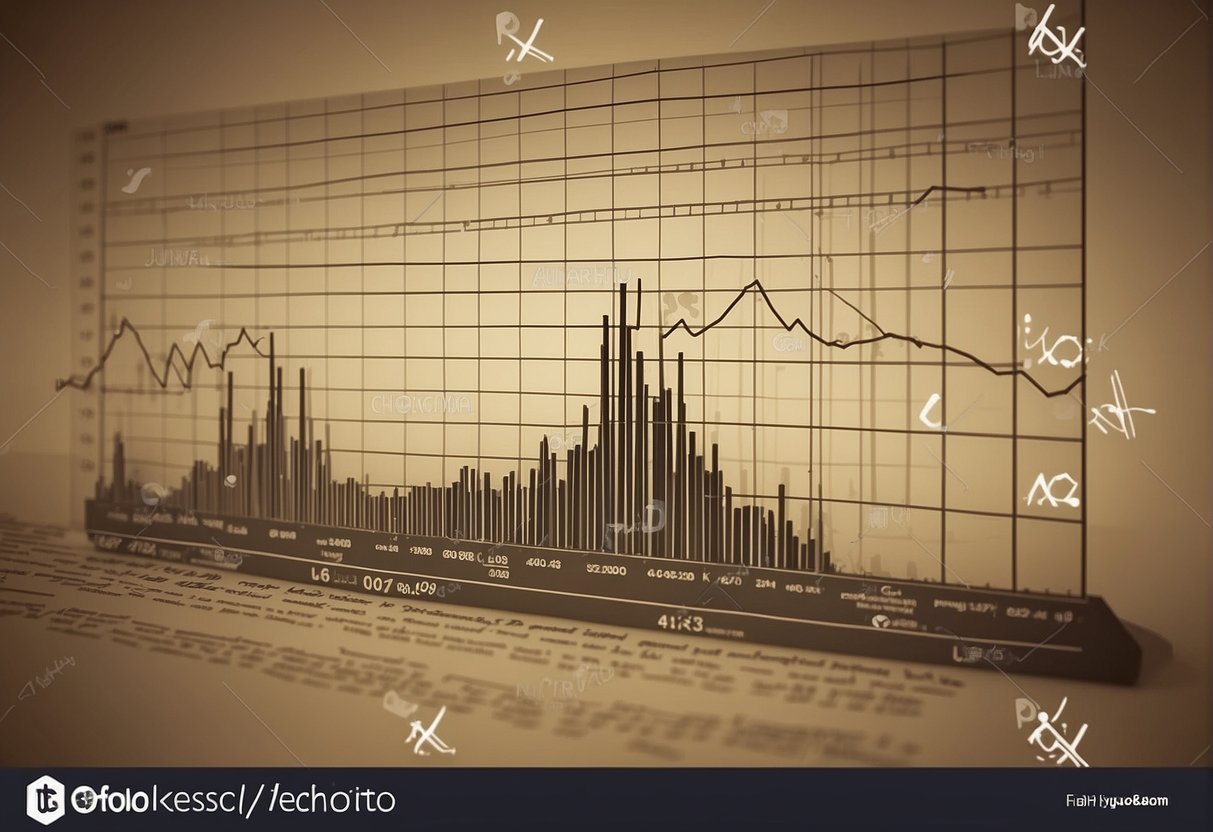
Charts and Patterns
Technical analysis is a critical aspect of market timing that uses historical price charts and patterns to derive trading opportunities and predict future price movements. Using candlestick charts and other visual tools, traders and investors analyze trends and make informed decisions.
One key tool used in technical analysis is moving averages. A moving average helps to smooth out price fluctuations over time and can be an important indicator for recognizing market trends. There are different types of moving averages, such as simple moving averages (SMAs) and exponential moving averages (EMAs), each with its own advantages and disadvantages. By plotting moving averages on a chart, technical analysts can identify potential trend reversals and enter or exit trades accordingly.
Technical Indicators
In addition to charts and patterns, technical analysts use various technical indicators to supplement their analysis and provide deeper insights. Indicators like relative strength index (RSI) and moving average convergence divergence (MACD) play a significant role in market timing and can help identify potential buying or selling opportunities.
The RSI is a momentum indicator that compares the size and speed of price movements, indicating whether an asset is overbought or oversold. Generally, an RSI reading above 70 indicates overbought conditions, while a reading below 30 indicates oversold conditions. Traders use RSI to determine potential entry or exit points based on these levels.
The MACD, the other hand, is a trend-following momentum indicator that calculates the difference between two moving averages and plots it against a signal line. A positive MACD value indicates ascending prices, while a negative value shows descending prices. When the MACD line crosses the signal line, it generates a buy or sell signal depending on the direction of the crossover. The various strategies using technical indicators can differ in complexity and effectiveness.
In conclusion, technical analysis and market timing rely heavily on historical data, charts, patterns, and technical indicators to make informed trading decisions. By gaining proficiency in these tools and techniques, traders and investors can optimize their market timing strategies and improve their overall trading performance.
Fundamental Analysis in Market Timing
Economic Indicators
Fundamental analysis plays a critical role in market timing by assessing individual companies’ financial health and prospects and overall market conditions. One key aspect of fundamental analysis is examining economic indicators to gauge the economy’s strength. The most relevant economic indicators influencing market timing include inflation, GDP growth, and unemployment rates.
A well-known metric, inflation rates, typically measured by the Consumer Price Index (CPI) or Producer Price Index (PPI), can directly impact market timing strategies. For example, high inflation rates can reduce consumer spending and dampen overall economic growth. Conversely, low inflation rates can signal increasing economic activity, which may encourage market participation.
GDP growth is another important economic indicator, as it represents the economy’s overall health. Rapid GDP growth indicates a thriving economy, driving investors to capitalize on the market’s upward trajectory. On the other hand, a contracting GDP may signal an economic downturn, prompting investors to adopt more conservative strategies.
Political and Economic Events
Another aspect of market timing within fundamental analysis is tracking political and economic events that may affect market dynamics. These factors can create fluctuations in the market, even upending long-standing historical trends and patterns. Such events may include policymaking decisions, global trade agreements, or geopolitical crises, each potentially influencing market sentiment and the direction of investments.
For instance, an unexpected change in a central bank’s monetary policy—such as interest rate adjustments or quantitative easing programs—can significantly impact market conditions. Market participants actively monitoring these events can use insights from these shifts to make informed investment decisions, sometimes even preempting sudden trends or movements.
In conclusion, fundamental analysis is a valuable tool for investors seeking to time their market entry and exit points. By tracking economic indicators and monitoring political and economic events that may impact the market, investors can capitalize on opportunities while mitigating risks associated with historical market trends and patterns.
Behavioral Aspects of Market Timing
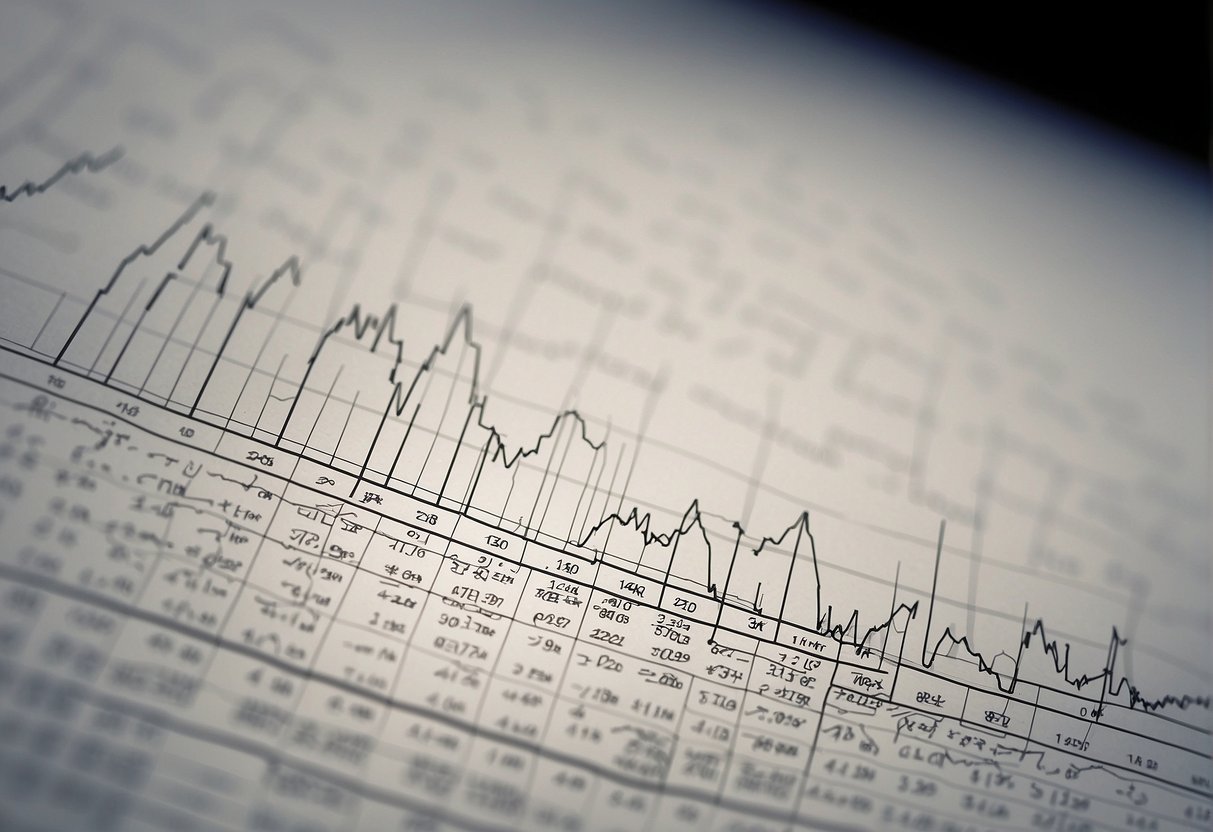
Market timing is an investing approach that attempts to predict market trends and fluctuations by analyzing historical trends, patterns, and other factors. One crucial aspect of this approach is understanding the behavioral elements that can influence market participants, such as fear, greed, investor sentiment, and psychological biases.
Fear and greed are heavily intertwined emotions that often drive investors to make market decisions. Both feelings can lead to irrational decision-making, causing people to buy or sell assets at inopportune times. For example, during market volatility or financial crises, fear may cause investors to panic and sell their investments, potentially locking in losses. Conversely, greed can lead to overconfidence, causing people to hold onto or excessively buy assets to achieve more significant gains. However, market timers can use these emotional extremes as indicators for contrarian investing strategies.
Investor sentiment and market sentiment play a significant role in market timing by reflecting the collective attitude of market players. High levels of optimism may signal overbought assets, while excessive pessimism can indicate oversold markets. Market timers can use sentiment indicators like the put/call ratio or the volatility index (VIX) to gauge investor sentiment and make informed investment decisions.
Market-timers should also be aware of various psychological biases affecting their decision-making process. Some common biases include:
- Confirmation bias is the tendency to favor information that confirms one’s existing beliefs while ignoring or downplaying contrary evidence.
- Recency bias: Placing more weight on recent events and trends while discounting historical data and long-term perspectives.
- Loss aversion is the preference for avoiding losses rather than achieving gains, which can lead to suboptimal selling or holding decisions.
To enhance market timing accuracy, timers should actively identify and counteract these biases, adopting a disciplined and systematic approach to decision-making. Steps to mitigate psychological biases may include understanding the influence of psychology in market timing, developing strict investment criteria, and using objective, quantitative tools to inform decisions.
In summary, market timing requires a thorough understanding of historical trends and patterns and the behavioral aspects that can influence market activity. Market timers can improve their chances of successful trading and long-term investment performance by recognizing and mitigating the impact of fear, greed, investor sentiment, and psychological biases.
Market Trends and Direction
Market trends play a significant role in determining the direction of financial markets, and understanding them is crucial for investors and traders alike. Market trends can generally be divided into three categories: uptrends, downtrends, and sideways or ranging markets. These trends help market participants make informed decisions on their investments.
An uptrend is a market condition characterized by consistently rising prices. During an uptrend, higher highs and higher lows are observed, signaling an overall improvement in market sentiment and investor optimism. This upward movement can be attributed to positive economic indicators, strong company performance, or favorable market conditions.
In contrast, a downtrend is a market scenario marked by declining asset prices. This occurs when lower highs and lower lows are evident in trading activity. Downtrends may result from factors such as weakening economic conditions, poor corporate performance, or unfavorable global developments. Those employing a bearish trading strategy often seek to profit during downtrends by shorting stocks or taking advantage of declining prices.
Long-term trends help establish the overall market direction. Macroeconomic factors typically drive them and can last months to years. Many investors closely monitor long-term trends to make better investment decisions, as they provide insight into the market’s overarching sentiment and direction.
While not solely responsible for market trends, seasonal patterns influence direction at certain times of the year. For instance, some common seasonal patterns include the “January effect,” where stocks tend to rise in the first month of the year, or the “sell in May and go away” strategy, which involves exiting the market in May and re-entering November. Seasonal patterns are essential to consider as they can guide on when to buy or sell securities.
Understanding the dynamics of market trends and direction can help investors and traders make timely and informed decisions. Market participants can gauge the momentum and strength of market trends by identifying uptrends, downtrends, and seasonal patterns, enabling them to better navigate the fluctuating financial markets.
The Role of Economic Data
Economic data plays a significant role in identifying historical trends and patterns in market timing. This data can be sourced from interest rates, economic growth, and financial releases. By analyzing these indicators, investors and analysts can derive meaningful insights into the economy’s overall health and make informed decisions regarding market entry and exit points.
One crucial component of economic data is interest rates. These rates influence the cost of borrowing money, affecting businesses and consumers. Historically, low-interest rates have been utilized to stimulate economic growth, while high-interest rates aim to curb inflation. Recognizing how these changes in interest rates impact the market can assist traders in devising appropriate strategies for market timing.
Economic growth, typically measured by Gross Domestic Product (GDP), is another essential component in understanding historical market trends. Optimistic GDP growth indicates a healthy economy, whereas negative growth may signal a recession. Monitoring economic trends and patterns in GDP data can give investors a better grasp of the market’s direction.
Economic data releases play a pivotal role in the financial markets. These releases provide investors with updated information on various aspects of the economy, such as employment, inflation, and trade balance. Some key examples include:
- Non-farm payroll
- Consumer Price Index (CPI)
- Producer Price Index (PPI)
- Retail sales
Reacting promptly to these data releases can lead to successful market timing, as these indicators often cause short-term market fluctuations.
In conclusion, the success of market timing often hinges upon effectively interpreting economic data. A firm grasp of how interest rates, economic growth, and financial data releases influence the market can enable investors to identify emerging trends and patterns, thus optimizing their trading strategies and capitalizing on potential opportunities.
Market Volatility and Timing Decisions
Market volatility refers to fluctuations in the value of financial instruments over a specified period, and it significantly impacts investors’ decision-making processes. During periods of high market volatility, investors often feel compelled to time the market to maximize gains or minimize losses.
One common method of understanding market volatility is examining historical data. This provides insights into the market’s past rhythms and patterns, which can be valuable in informing investment strategies. For instance, during the 1929-1932 stock market decline, volatility initially normalized by falling from a two-week reading of 127% to under 10% in about five months.
Market timing involves adjusting one’s portfolio based on the predictions of short-term fluctuations in the market. This strategy contrasts with a buy-and-hold approach, where investors maintain a long-term focus and avoid frequent trading. However, deciding if and how to time the market is a complex and often controversial decision, depending on the individual investor’s skills, knowledge, and risk tolerance.
Market timing strategies vary and can involve using technical and fundamental analysis to anticipate and react to shifts in market sentiment. For instance, some investors may increase their exposure to risky assets during bull markets, while others may reduce their holdings during high volatility. The effectiveness of these strategies is a topic of debate among professionals and academics.
Investors need to be aware of the potential perils of market timing, as historical data has shown that timing volatile markets can lead to suboptimal results. For example, in 2020, despite the sharp bear market, the average equity fund investor underperformed the S&P 500 by only 131 basis points (18.40% for the S&P 500 vs. 17.09% for the average equity fund investor). However, in 2021, the average equity fund investor finished the year with a return of 18.39% versus an S&P 500 return of 28.71%, illustrating the difficulty in consistently timing markets accurately.
In conclusion, market volatility and timing decisions are essential to any investment strategy. Investors must carefully weigh the risks and potential rewards of market timing approaches against their knowledge, experience, and risk tolerance.
Assessing Risks and Potential Gains

When it comes to market timing, understanding the historical trends and patterns is crucial for assessing the risks and potential gains involved. Investors use trend analysis to project future market movements based on past data. However, it’s essential to be aware of the potential gains and challenges of this strategy.
Market timing entails predicting short-term market fluctuations to capitalize on investment opportunities. This approach can yield potential gains such as better returns and optimized investment timing. However, one must also consider possible risks and challenges associated with market timing, including the difficulty of accurately forecasting short-term trends and missing out on long-term growth opportunities.
Risks of Market Timing: One of the main challenges of market timing is that it relies heavily on accurately predicting market fluctuations. This can be difficult as global events, economic indicators, and investor sentiment influence financial markets. The risk of inaccurate timing could result in losses instead of the anticipated gains. Moreover, market timing can entail higher transaction costs, cutting profits and increasing the breakeven point.
Potential Gains: If executed correctly, market timing can yield significant gains for investors. Identifying market trends early may lead to buying low-price investments and selling them when they’re peaking, generating higher profits. Market timing can also help avoid substantial losses during market downturns by exiting the market before the trend turns negative.
However, adopting a market timing strategy demands constant monitoring of market trends and quick decision-making. A well-executed market timing approach can help investors secure gains and minimize risks. Still, it’s crucial to maintain a clear understanding of the inherent challenges and complexities of predicting market movements.
In conclusion, understanding the historical trends and patterns in market timing is imperative for assessing the risks and potential gains involved. While market timing can provide significant benefits when executed successfully, it is essential to be cautious of this strategy’s possible challenges and risks. By maintaining a balanced approach, investors can effectively navigate the complex market timing and investment management world.
Investment Strategies and Market Timing
Active vs. Passive
Market timing is an active investment strategy that contrasts with the more passive buy-and-hold approach. Unlike the buy-and-hold strategy, which entails long-term investing in a well-diversified portfolio, market timing focuses on actively managing investments and making calculated decisions based on the market’s trends and patterns.
While long-term investing might be effective for some, the market timing strategy can lead to significant profits when executed accurately. This method demands careful analysis and a deep understanding of market trends, which can be daunting to investors new to the investing world.
Diversification and Timing
One key aspect of any successful long-term investment strategy is diversification. A well-diversified portfolio can withstand market fluctuations and reduce risk. However, market timing strategies seek to capitalize on these fluctuations by timing investments based on prevailing market conditions and historical trends.
For instance, investors might utilize known seasonal patterns in the stock market, such as the “sell in May and go away” or “turn of month” strategy. By combining such approaches with a solid understanding of market cycles and trends, investors can create more opportunities for profit from the market’s natural volatility.
It is crucial for investors to carefully analyze their decisions and avoid making exaggerated claims when dealing with market timing strategies. As an investment approach has its benefits and drawbacks, it’s essential that individuals thoroughly research and consider their options before committing to a specific plan.
Asset Classes and Market Timing
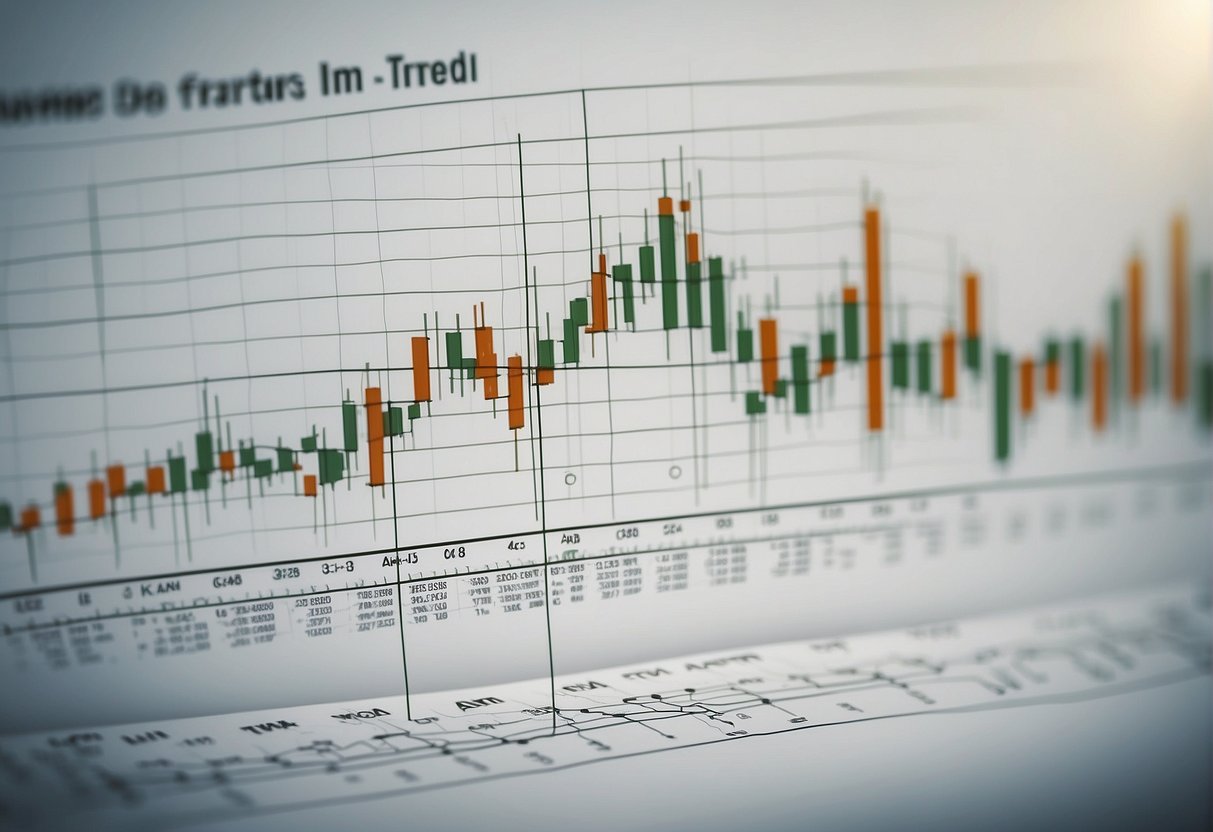
Market timing refers to the ability of investors to predict market fluctuations and preemptively shift their investments across various asset classes for increased returns. These asset classes include bonds, commodities, real estate, and other financial assets. To better understand the relevance of market timing, it’s crucial to explore how historical patterns and trends impact these asset classes.
Equity markets have exhibited long-term bull and bear market cycles throughout history, but identifying these cycles in real time is challenging. U.S. stocks tend to outperform other asset classes in the long run, but they are subject to market volatility, which can lead to significant short-term losses.
Bond markets are known for offering more stability than equities but are not immune to fluctuations. Interest rate changes can impact bond prices, with prices rising when interest rates fall and vice versa. However, bonds usually experience lower volatility and minor losses than stocks, making them a popular choice for investors seeking to mitigate risk.
Commodities have unique market timing trends based on economic growth and demand-supply dynamics. For instance, during periods of inflation, commodity prices tend to rise as investors seek tangible assets to protect their portfolios’ purchasing power. Additionally, geopolitical events can create short-term imbalances in global commodity markets, offering market timing opportunities.
The real estate market also demonstrates cyclical patterns influenced by interest rates, economic growth, and regional demographics. Real estate prices may increase or decrease depending on the particular cycle, affecting the overall return on investment. Investors using market timing strategies can capitalize on these trends by moving in and out of real estate investments at the right moments.
Market timing in these asset classes relies on understanding historical patterns in asset prices and using predictive analytics to anticipate price changes. However, it’s essential to remember that past performance is not always indicative of future results, and successful market timing is notoriously difficult to achieve consistently.
Market timing involves strategically allocating capital across various asset classes to capitalize on historical trends and patterns. While successful market timing can lead to enhanced gains, it’s crucial to recognize its inherent risks and uncertainties. As investors navigate financial markets, they must exercise caution and conduct thorough research to make well-informed decisions.
Market Conditions and Timing Entry Points
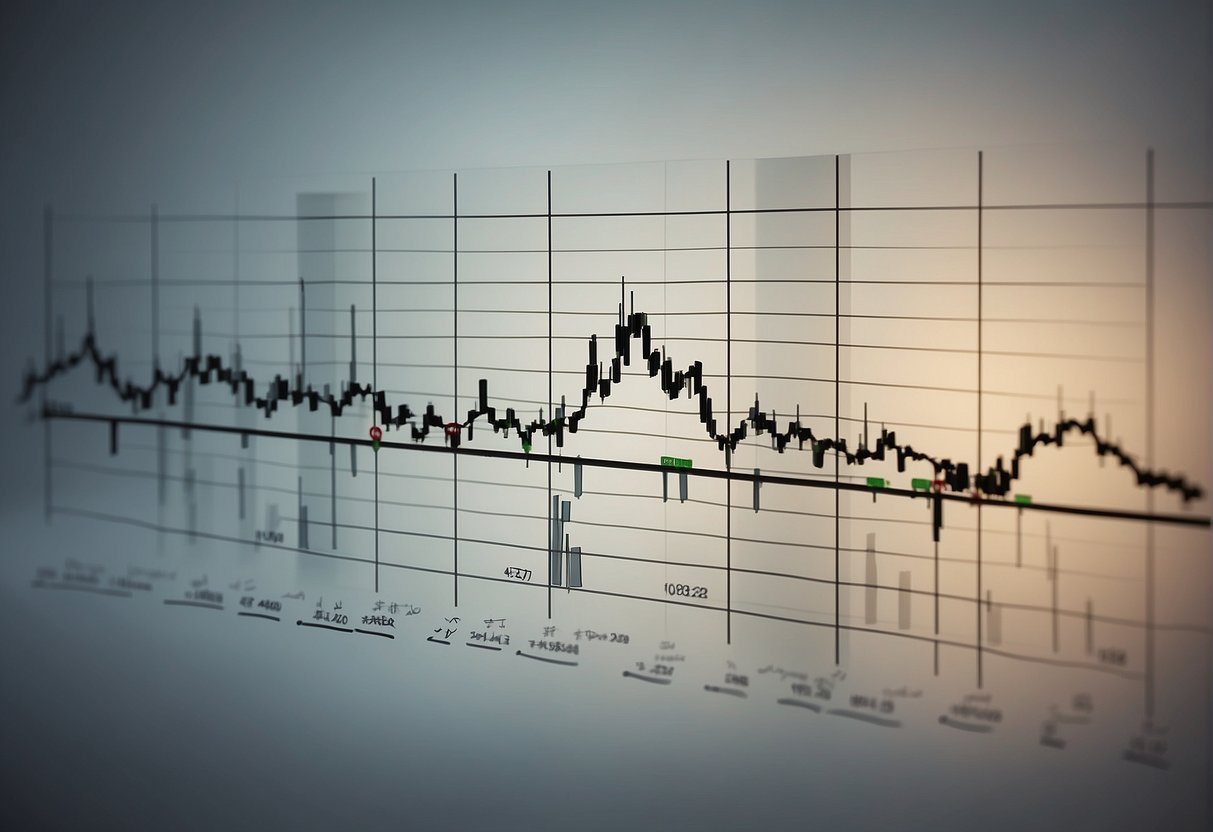
Market conditions significantly determine the optimal entry and exit points for buying and selling assets. These conditions encompass various factors, such as economic indicators, investor sentiment, and industry-specific trends. Understanding these dynamics can help investors make more informed decisions when allocating cash to their portfolios.
One primary aspect to consider is the state of the economy. For example, during periods of economic expansion, stock prices generally rise, providing favorable conditions for investing. Conversely, during slowdowns or recessions, asset prices can be temporarily depressed, leading to potential opportunities for savvy investors who can identify undervalued assets.
Another critical factor is industry trends. Different sectors may perform better or worse depending on market cycles, regulations, and technological advancements. For instance, the Timing Market Entry study highlights the relationship between telecom operators’ market entry timing and technology adoption. Understanding trends in specific industries can help investors fine-tune their entry points.
When timing entry points, investors should also monitor investor sentiment. Market psychology is crucial in determining asset prices, as it can be driven by emotional factors such as fear, greed, and hope. For example, in a bull market, positive sentiment may drive stock prices to unsustainable levels, creating potential risks for investors entering the market. On the other hand, bear markets often exhibit negative sentiment, which may lead to undervalued stocks, presenting entry opportunities for investors with a long-term perspective.
In addition to the abovementioned factors, skilled investors should know technical analysis techniques. These may include monitoring price patterns, support, resistance levels, and moving averages to determine potential entry and exit points. The Art of Timing article demonstrates that analyzing these indicators can maximize profits and minimize losses.
Finally, investors should always maintain a diversified portfolio containing a mix of assets to reduce risk while optimizing returns. Despite the importance of understanding market conditions and timing entry points, diversification remains crucial to a successful investment strategy, safeguarding against unforeseen market fluctuations.
In conclusion, considering market conditions, industry trends, investor sentiment, technical analysis, and diversification can significantly improve entry and exit point timing. By staying informed and adaptable to changing market dynamics, investors can enhance their chances of success in managing their portfolios.
The Impact of Transaction Costs
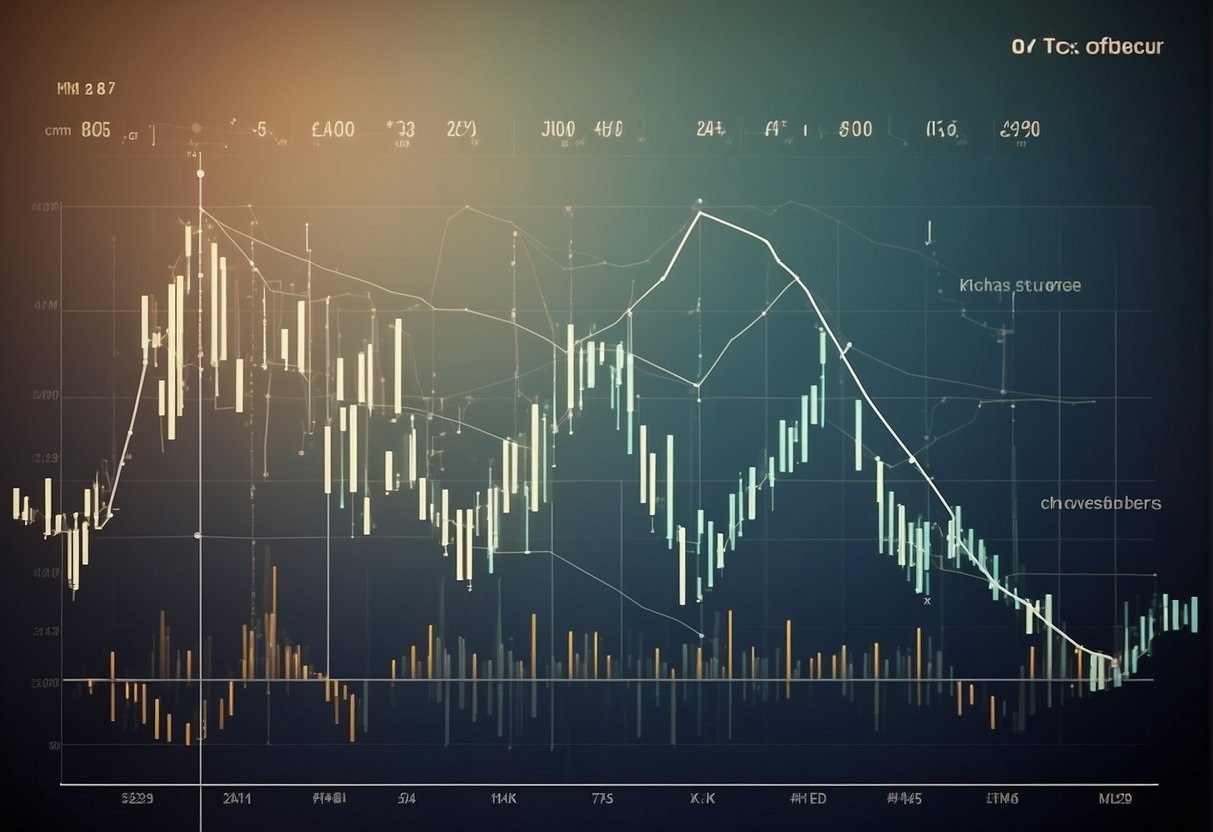
Transaction costs are an essential aspect to consider when evaluating historical trends and patterns in market timing. These costs typically include commissions, fees, and spreads that apply when buying and selling assets in the market. The existence of transaction costs can lead to investors altering their investment strategies and subsequently influencing market dynamics.
One major factor in transaction costs is the commission fees brokers charge for executing trades. Commissions can vary across brokers and asset types and generally decrease as trade volumes increase. For example, a retail investor might pay a higher commission percentage for a small trade than an institutional investor trading a larger volume. The commissions paid can significantly impact the overall profitability of an investment strategy, especially for active traders who engage in frequent buys and sells.
Another component of transaction costs that impact market timing is the bid-ask spread. This represents the difference between the highest price a buyer is willing to pay (bid) and the lowest price a seller is willing to accept (ask). The spread is influenced by factors such as liquidity and volatility, which can alter investor behavior. In highly liquid markets, spreads tend to be tight, potentially prompting investors to execute trades more frequently. Conversely, a wider bid-ask spread could discourage trading and affect investors’ market timing decisions.
In addition to commissions and bid-ask spreads, investors may encounter other transaction costs when trading assets. One example is the market impact cost, which refers to the movement in the asset price that results from a trade[^1^]. This cost becomes more significant for larger trades or those executed in less liquid markets. The market impact cost can lead investors, particularly those with large volumes or less liquid assets, to adjust their market timing to minimize the effect of their trades on asset prices.
In summary, transaction costs play a crucial role in shaping historical trends and patterns in market timing. They can influence investor behavior by affecting investment strategies’ profitability and creating potential entry barriers for individuals with limited capital or experience. By understanding how transaction costs impact market dynamics, investors can better navigate the financial markets and improve their decision-making process.
The Efficient Market Hypothesis Debate
The Efficient Market Hypothesis (EMH) has been debatable in the financial world for many years. This hypothesis is based on the idea that financial markets effectively process and reflect all available information, making it impossible for investors to consistently outperform the market based on information already known to the public. There are three forms of the EMH, which are:
- Weak form – Assumes current stock prices reflect all available information.
- Semi-strong form – Suggests securities prices adjust rapidly to the newly available information.
- Strong form – Asserts that all public and private information is already incorporated into stock prices.
Taking a long-term perspective in investing allows one to understand the historical trends and patterns in market timing. While the debate surrounding the validity of the efficient market hypothesis continues, it is essential to analyze how these historical trends impact investment decisions.
A critical aspect of the efficient market hypothesis is the belief that any attempt to time the market or consistently achieve better-than-average returns based on already-public information is a fruitless endeavor. This theory has led many investors to adopt passive investing strategies, such as index fund investing, rather than attempting to beat the market through active trading.
However, many critics argue against the efficient market hypothesis, citing examples of market inefficiencies and anomalies and instances of successful investors who have consistently outperformed the market. Consequently, some investors still believe in the potential for active strategies and informed investment decisions, such as stock picking and market timing.
In the debate around the efficient market hypothesis, considering the factors affecting investment decisions, such as access to information and individual risk tolerance, is essential. Investors need to weigh these factors against the long-term perspective they plan to adopt and the possible implications of active and passive strategies on their financial goals.
As the debate over the efficiency of financial markets continues, individuals must carefully assess their investment approach and the historical trends in the market to make more informed investment decisions.
Footnotes
Frequently Asked Questions
How can one identify consistent patterns in market timing over the past decades?
Identifying consistent patterns in market timing requires a thorough analysis of historical market data. Different technical indicators and economic data can be used to map out patterns and trends in the market. Numerous variable factors, such as economic cycles, political climates, and global events, must be evaluated to influence market performance.
What are typical examples of market timing trends observed in financial history?
Common examples of market timing trends include bull and bear markets, recessions, and market bubbles. These trends often result from economic factors, market sentiment, or policy changes. For example, the dot-com bubble in the late 90s was characterized by a rapid rise in technology stock prices, followed by a sharp decline. Similarly, the global financial crisis of 2008 was marked by a severe bear market due to the collapse of housing prices and an economic recession.
Which types of trend analysis are most effective in understanding market timing?
Various types of trend analysis can be utilized to understand market timing. Technical analysis, for instance, uses historical price movements and trading volume to identify patterns. Fundamental analysis, on the other hand, focuses on evaluating the financial health of companies and industries to anticipate future market trends. In addition, economic cycles can provide valuable insights into the timing and duration of market phases.
What role do historical trends play in day trading strategies?
Historical trends can significantly shape day trading strategies. Traders often reference past market data to identify trends and predict price movements, enabling them to develop suitable methods for buying, selling, or holding their investments. By analyzing historical trends and patterns, traders can make more informed decisions and mitigate potential risks.
How does one analyze market trends to inform investment decisions?
Analyzing market trends involves a combination of technical and fundamental analysis and an understanding of the broader economic environment. Traders may use tools such as moving averages, trendlines, and chart patterns to identify trends in market data. Keeping abreast of financial data, global events, and policy changes can help inform investment decisions.
Can you delineate the phases of the market cycle and their timing implications?
Market cycles typically consist of four main phases: accumulation, markup, distribution, and markdown. During the accumulation phase, savvy investors begin buying undervalued assets. The markup phase follows, with more investors joining, increasing demand, and rising prices. The distribution phase occurs when prices peak and investors start selling off their assets. Finally, the markdown phase sees declining prices as most investors exit the market. Recognizing these market cycle stages can help investors understand the timing implications and make informed investment decisions.
Conclusion
Investors have utilized market timing in various forms for many years. Its primary goal is to take advantage of potential opportunities in the market by predicting cycles, trends, and patterns. In its most basic form, market timing is a combination of technical analysis and fundamental analysis.
Historically, market timing has evolved to include quantitative methods and statistical tools. This advancement has allowed investors to be more systematic and objective in their decision-making. The development of various strategies, such as forex market timing, and the understanding of phenomena such as the Month-End Effect further demonstrate the growth in this field over time.
Despite the potential benefits of market timing, it is essential to acknowledge its risks and limitations. The effectiveness of market timing remains a topic of debate, as it can be challenging to predict market movements consistently. Furthermore, there is no one-size-fits-all approach to market timing; different strategies and approaches might yield different results depending on the investor and market conditions.
In short, market timing is a multifaceted discipline with a rich history and notable advancements. It can potentially offer investors valuable insights but requires thorough understanding and careful implementation. Balancing the potential benefits and risks associated with market timing could be the key to successful investing for those who incorporate this strategy in their investment journeys.

